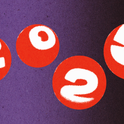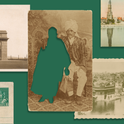Thomas de Quincey, aged 19, first takes opium to relieve severe facial pain:
“I was necessarily ignorant of the whole art and mystery of opium taking: and what I took, I took under every disadvantage. But I took it—and in an hour, oh heavens! What a revulsion! What an upheaving, from its lowest depths, of the inner spirit! What an apocalypse of the world within me!
That my pains had vanished was now a trifle in my eyes—this negative effect was swallowed up in the immensity of those positive effects which had opened before me—in the abyss of divine enjoyment thus suddenly revealed. Here was a panacea—a soothing drug for all human woes. Here was the secret of happiness—about which philosophers had disputed for so many ages—at once discovered: happiness might now be bought for a penny and carried in the waistcoat pocket; portable ecstasies might be had corked up in a pint bottle; and peace of mind could be sent down in gallons by the mail coach.”
1839
Queen Victoria, aged 20, proposes to her cousin at Windsor Castle:“I sent for Albert; he came to the Closet where I was alone, and after a few minutes I said to him that I thought he must be aware why I wished them to come here and that it would make me too happy if he would consent to what I wished (that he should marry me). We embraced each other over and over again, and he was so kind, so affectionate. Oh! To feel I was, and am, loved by such an angel as Albert, was too great delight to describe! He is perfection; perfection in every way—in beauty—in everything!
I told him I was quite unworthy of him and kissed his dear hand—he said he would be very happy, “das Leben mit dir zu zubringen”, and was so kind, and seemed so happy, that I really felt it was the happiest brightest moment in my life, which made up for all that I had suffered and endured. Oh! How I adore and love him, I cannot say!! How I will strive to make him feel as little as possible the great sacrifice he has made. I told him it was a great sacrifice—which he wouldn’t allow... I feel the happiest of human beings.”













